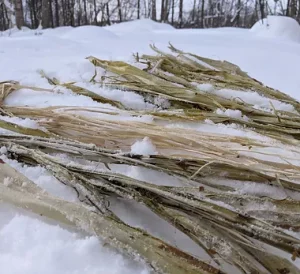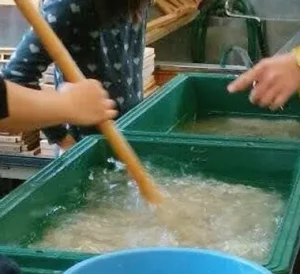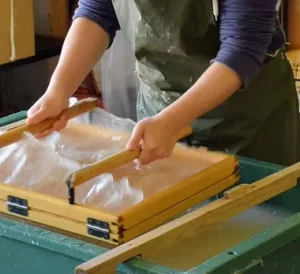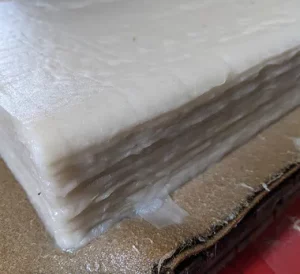Paper Making Process
Here are the steps of the Japanese handmade paper making process.
1 Harvesting

Kozo, the raw material, is harvested from late November to December.
2 Steaming

Collected mulberry is bundled with rope and steamed in a pot or drum can.
3 Peeling off the bark

After steaming the mulberry for about two hours, peel off the outer bark while it is still hot.
4 Remove outer bark

After soaking overnight and, if possible, left on the snow to and freeze, the black outer bark is scraped off so only the white inner bark remains.
5 Yukigashi

Spread and cover the white bark with snow for about a week. The sun and ozone produced from the snow moisture bleaches the fibers naturally
6 Boiling

Boil in alkaline ash and soda ash for about two hours to soften the exposed kozo.
7 Fushihiroi

Boiled kozo is thoroughly drained with running water and any bark flecks or debris are removed.
8 Paper beating

Beat the cleaned material with a wooden stick or hammer to make a fine fibery pulp.
9 Koburi

Suspend the kozo pulp in a tub filled with water, add an appropriate amount of nori (natural adhesive), and mix it well and evenly throughout the water.
10 Paper making

The pulp is scooped up using a bamboo screen and shaken back and forth many times to evenly distribute and weave together the fibers. This is a unique feature of Japanese paper making.
11 Compressing

Each finished sheet of paper is layered until there is a stack. The stack is pressed overnight to exude excess water. Even though it is wet, the layers don’t stick together.
12 Drying
